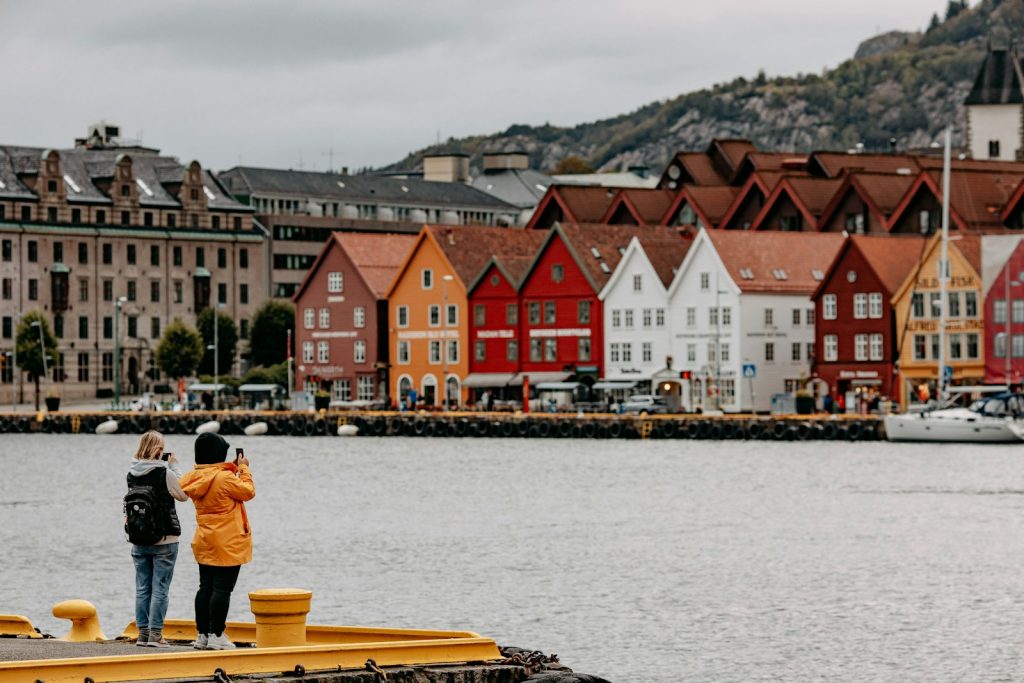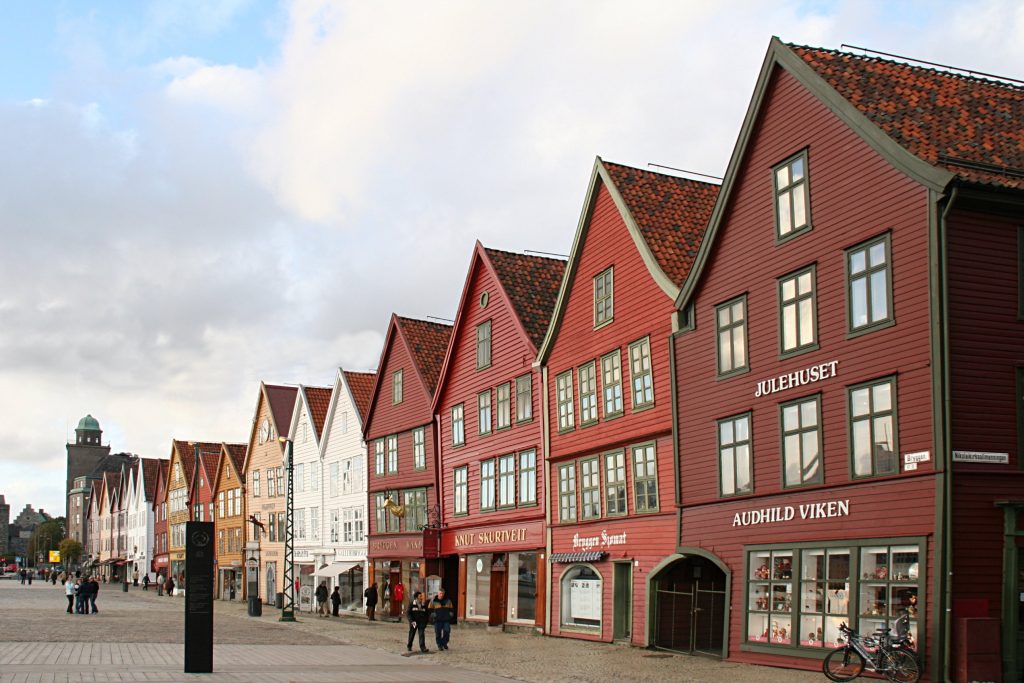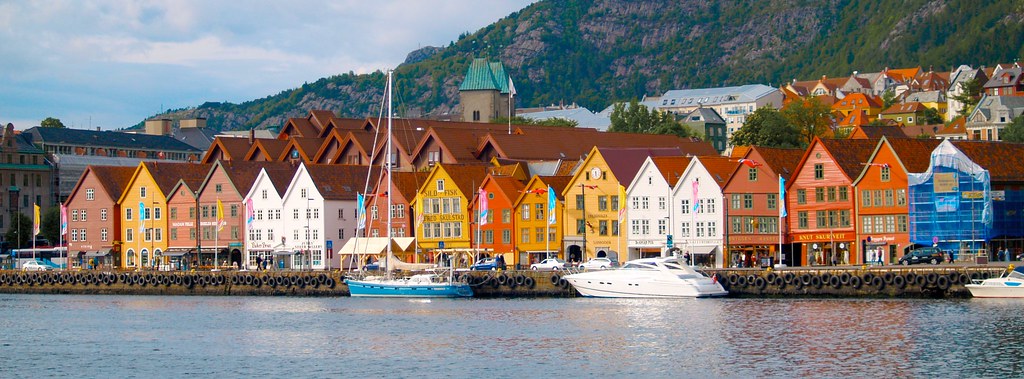Bryggen, the old wharf of Bergen, stands as a testament to Norway‘s rich maritime history and its role in the Hanseatic League’s trading empire during the medieval period. This historic harbor district, with its characteristic wooden buildings, has weathered numerous fires and challenges over the centuries, yet it continues to be a symbol of Bergen’s cultural heritage and economic importance. In this article, we will explore the history, architecture, preservation efforts, and management of Bryggen, highlighting its significance as a UNESCO World Heritage Site.
History and Importance
Established as a center for trade by the 12th century, Bergen quickly became one of Northern Europe’s most important port cities. In 1350, the Hanseatic League, a powerful trading alliance, established a Hanseatic Office in Bergen, gradually gaining control of Bryggen and monopolizing the trade in stockfish from Northern Norway. Bryggen served as one of the league’s four overseas offices and remains the only one preserved today.
Despite facing numerous fires over the centuries, Bryggen has been rebuilt time and again, following old patterns and methods. The current appearance of Bryggen largely stems from the reconstruction efforts after the fire in 1702, with its wooden buildings reflecting vernacular building traditions of the past.

Architecture and Design
The architecture of Bryggen is characterized by its compact medieval urban structure, with long rows of wooden buildings facing the harbor and separated by narrow passages. Today, approximately 62 buildings remain, showcasing how the district once functioned as a colony for German merchants. These buildings, known as “gårds,” feature gabled facades, timber log construction, and galleries with column and beam construction. The roofs, often tiled with brick or sheets, bear witness to past repairs and adaptations, including those made after World War II.
The layout of Bryggen, with its narrow passages and interconnected buildings, reflects the living and working conditions of the Hanseatic traders. Each gård served as a residence, warehouse, and communal space, highlighting the social organization and utilitarian nature of the district.

Preservation and Conservation
Despite facing threats from fires, urban development, and climate change, Bryggen has been meticulously preserved and protected. Only a quarter of the original buildings remain, but these structures, along with the medieval urban layout, provide a tangible link to Bergen’s Hanseatic past.
Efforts to safeguard Bryggen began in the 1960s, with major progress made by 1979 when it was inscribed as a UNESCO World Heritage Site. Preservation efforts focus on maintaining original materials and building methods, with careful documentation and monitoring of changes. The Bryggen Project, established in 2000, oversees ongoing restoration and conservation work, including archaeological excavations and building maintenance.

Management and Future Challenges
Bryggen is privately owned, with the majority of buildings belonging to the Bryggen Foundation. Collaborative efforts between owners, authorities, and stakeholders ensure the effective management and protection of the site. A comprehensive management plan addresses issues such as fire protection, tourism management, and urban development in the surrounding area.
Despite these efforts, Bryggen faces ongoing challenges, including the risk of fire, increased tourism, and the potential impacts of climate change. Continued vigilance and proactive measures are essential to ensure the long-term preservation of this historic treasure.
Conclusion
Bryggen stands as a testament to Bergen’s maritime heritage and its integral role in the Hanseatic League’s trading network. Through centuries of fires, rebuilding, and adaptation, Bryggen has retained its unique character and significance. As we look to the future, it is imperative that we continue to cherish and protect Bryggen, ensuring that future generations can appreciate its historical, architectural, and cultural value.
Read in Rachona: Bryggen: Preserving the Legacy of Bergen’s Hanseatic Trading Empire


